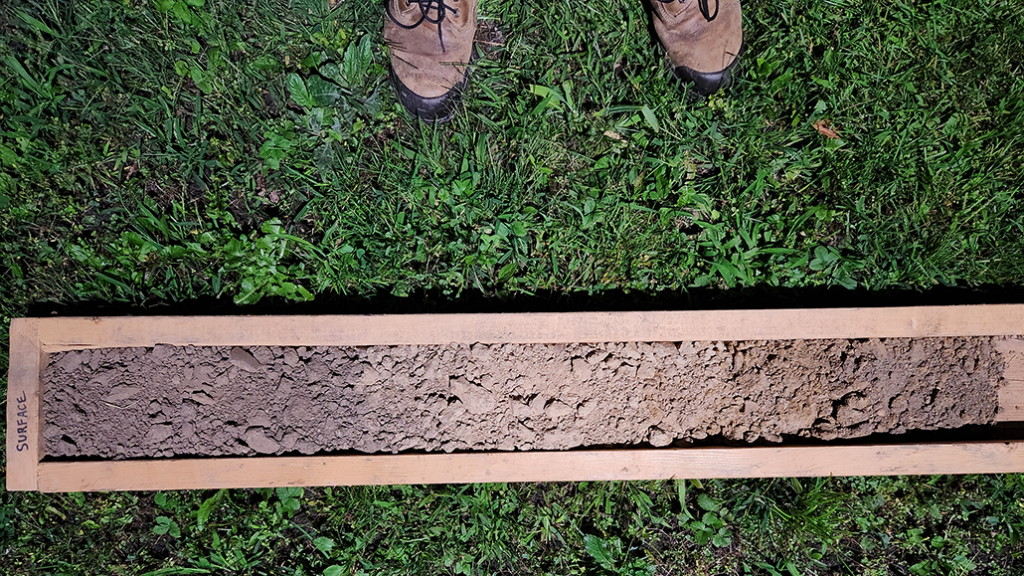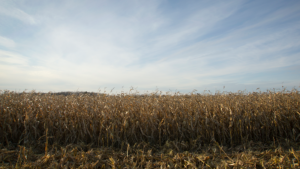Leaching nitrogen
AGRONOMIC INFORMATION FROM ONTARIO'S CROP SPECIALISTS


A COMMON QUESTION in a year with lots of rainfall, like 2023 — is how much rain is needed to leach nitrogen? Should we apply extra nitrogen to cover losses if we receive a lot of rainfall in July and August?
At Southwest Crop Diagnostic Days, we did a fun experiment to see how much water was needed to move nitrates. The trial was completed at the end of June on a very dry sandy/fine sandy loam soil (Figure 1). Potash (KCl) was applied in the test area at 1,000 lb/ac. Water was later applied in various amounts (0 – 6 inches). Four soil cores were pulled from each water treatment and segmented into four-inch increments to 36 inch depth to follow chlorides through the profile.
Chloride (Cl-) from potash moves very similar to nitrate (NO3-) in soil water but is not susceptible to the same microbial transformations. This provides a similar but more stable representation of solute movements in soil water.
HOW MUCH MOVEMENT?
Chlorides in the top four inches were very high, with no rainfall, as dry fertilizer granules remained on the soil surface. Chlorides moved deeper as more water was added. With the highest amount of water tested (six inches), the chloride pulse moved down about 20 – 24 inches (see Table 1).

Corn rooting depth varies depending on soil texture, compaction, and water tables. Corn in Ontario might be able to pick up nitrates within a 36-inch depth. If nitrates do not move below the root uptake zone of corn, they should still be accessible. In this experiment, movement with even six inches of water should still be accessible by corn plants.
WHY DOES IT NOT MOVE MORE?
Soil acts like a sponge. Capillary forces in small spaces are strong enough to hold water against the force of gravity. Before water can flow to depth, these small pores must be filled. From late June through July and August, potential evapotranspiration (water loss from evaporation from soil and transpiration from plants) is typically much greater than precipitation. This slowly dries out our soil sponge. Before we can lose water below the rooting zone, we need to saturate the sponge again, which requires very significant amounts of water this time of year. This partly explains why nitrogen leaching losses tend to be more of an issue outside the main growing season when soils are more easily saturated (e.g., late fall or early spring) than during it.
Not to say there were no nitrogen losses in 2023, but heavy rainfalls during the middle of the growing season (e.g., late June through August) are likely to make it more difficult to lose nitrogen than if the same rain had been received earlier in the growing season. •























